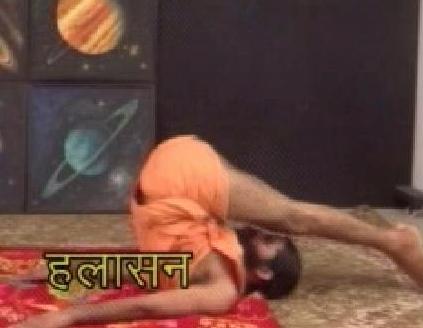Halasana | Plow Pose
Hala is a sanskrit word, which means ‘plow’. Body looks like a plow while practicing Hala Asana. This posture is like an extension to Sarvangasana. Benefits of Halasana pose are numerous like sarnangasana.
Procedure
1. Lie down on the back comfortably inhale through nostrils, joint both legs together and raise upwards slowly, till legs make 90 degree angle with the body. Keep the hands facing down, you can take support of hands with the floor to make the practice easier.
2. Continue bending the joined legs over the head by lifting towards back, till the toes touches the floor just behind the head. You can take support of both the hands while bending legs over head, but after touching toes to the floor, take the hands back on the floor with palms facing down the floor.
3. Breath normally and keep the knees straight. This is the final position. In the beginning, if you are unable to touch the floor by toes, try to make it as nearest as possible. Hold at this position about 30 seconds.
4. Now reverse the process slowly step by step back to normal in savasana.
Duration
Halasana or Plow Pose can be practiced normally upto 30-seconds. In the beginning, the practitioner should hold the pose till he/she feels comfortable, don’t try to overdo it.
Benefits
- Benefits of halasana pose are numerous like sarvangasana. Muscles and ligaments of thighs and calves are stretched and relaxed, which results greater legs flexibility. Legs cramps are relaxed with it.
- Makes the spinal cord flexible and strong. Muscles of back also get stronger.
- Cures the problems of ‘thyroid’ gland which leads to complete health to prevent obesity and harmonal diseases.
- Helpful in gastric and constipation problems. Cures Liver, Pancreas, Spline problems.
Precautions
- It must be practiced under guidance of experienced yoga teacher.
- Women during menstrual periods should avoid halasana.
- Blood Pressure, Cirvical and Spinal Cord patients should not do it without doctor’s advise.

